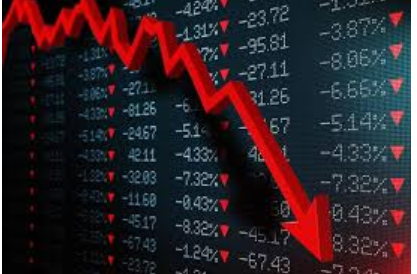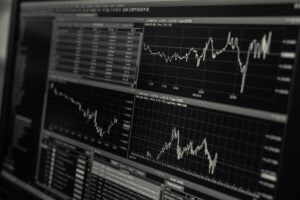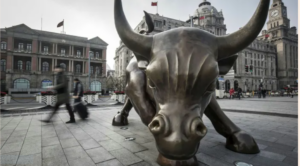Saxo Bank forventer, at der bliver mere fokus på råvarerne i den kommende tid, hvor den globale vækst vil falde, og hvor renterne stiger. Olien fortsætter med at stige, og det samme gør flere råvarer. Verdensbanken har sænket sin prognose for den globale økonomi fra 4,1 til 3,2 pct. for i år, og banken venter en “exceptionel” usikkerhed på markederne.
Global growth to slow, markets brace for higher rate hikes. Traders return to oil, grains, iron ore and affiliated APAC stocks
Summary: Global growth to slow says the World Bank, Earnings estimates are weaker and markets brace for more rate hikes. So, Traders turn to commodities again. Oil continues its climb from last week, as global mobility picks up while supply remains cut off from Libya. Broad Asian markets are mixed, yet stocks shine in power generation and Ag. While down under in Australia, their share market inches toward its record all time high, beefed up iron ore, oil and fertilizer stocks.
World Bank downgrades global growth estimates. The World Bank cut its 2022 outlook to 3.2% from 4.1%, dragged down by Europe and Central Asia amid the Russian invasion of Ukraine. World Bank Chief Economist Carmen Reinhart said there is “exceptional uncertainty” in global markets and further downgrades cannot be ruled out.
The major US indices brace for weakness: The Nasdaq 100 (USNAS100.I), S&P 500 (US500.I) are on the back foot, trading under their 50-day moving averages. Q1 earnings expectations are the weakest since March 2020, plus results so far are showing profit erosion and rising input costs. Traders are digesting World Bank estimates of slower growth for the year, and bracing for more rate hike hints Thursday. Meanwhile, oil giants remain favored, Occidental (OXY) shares trade up 112% this year, Halliburton (HAL) trades up 82% YTD, Marathon Oil (MRO) up 63% YTD, with oil companies likely to see the strongest earnings growth this year.
Asian markets are mixed: The MSCI Asia Pacific, ex Japan Index (FMASM2) is lower. Singapore’s STI Index (ES3) up 0.7% led by power generation firm Sembcorp (S51), travel stocks such as Genting Singapore (G13) and Singapore Airlines (C6L) as well as agriculture stock Wilmar (F34) and banks UOB (U11) and DBS (D05). Japan’s Nikkei (NI225.I) was trading flat, supported mainly by gains in base metals but dragged by Fast Retailing (9983). MSCI Asia Pacific ex-Japan was lower after US stocks closed in the red overnight and gains in oil prices continued.
Grain prices surge again. Wheat prices (futures) up 3.6% to $11.28 a bushel, forming another uptrend on lack of supply fears, as colder weather (snow) is tipped to slow planting in Canada. Plus, Wheat planting in US is growing slower than last year. USDA’s springs wheat seedings crop progress report shows 8% of the expected area was planted, compared to 18% last year. Wheat is likely to head higher due to warmer summers, colder winters, meaning soil temps in Canada and US are not ideal, so slimmer supply is ahead, which is supporting wheat prices. Meanwhile Corn prices near a record high. And International Rice Research institute forecasts rice yields may drop 10% in the next season – that is 36mn tons. This will continue to get worse if the war continues.
Iron ore (SCOA) trading above $155 for first time in 2.5 months. Iron ore likely to continue uptrend and also potentially spike if China cuts interest rate again. This is supporting stocks like BHP, RIO FMG.
US Earnings to watch. Bank of America (BAC) surged on better-than-expected Q1 results but BNY Mellon (BK) slumped. Focus now on mid-tier financial services earnings like Fifth-third (FITB) and Citizens Financial (CFG). Also on watch will be J&J (JNJ), Netflix (NFLX), Lockheed Martin (LMT), IBM (IBM), Halliburton (HAL) and others. Key issues to consider will be inflation and Fed’s aggressive tightening, but also how supply chains and consumer demand recovery is shaping up.




